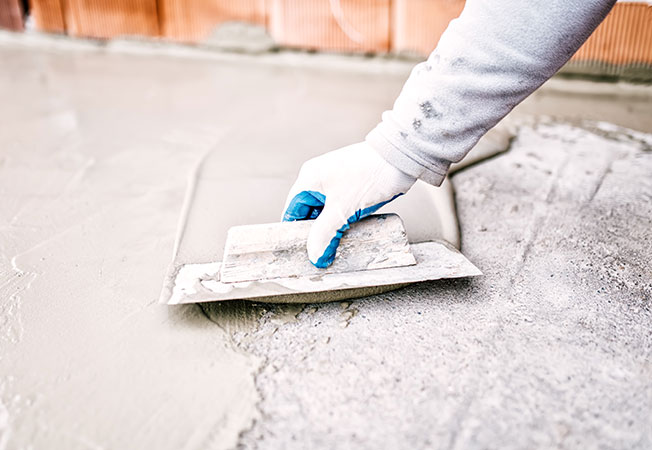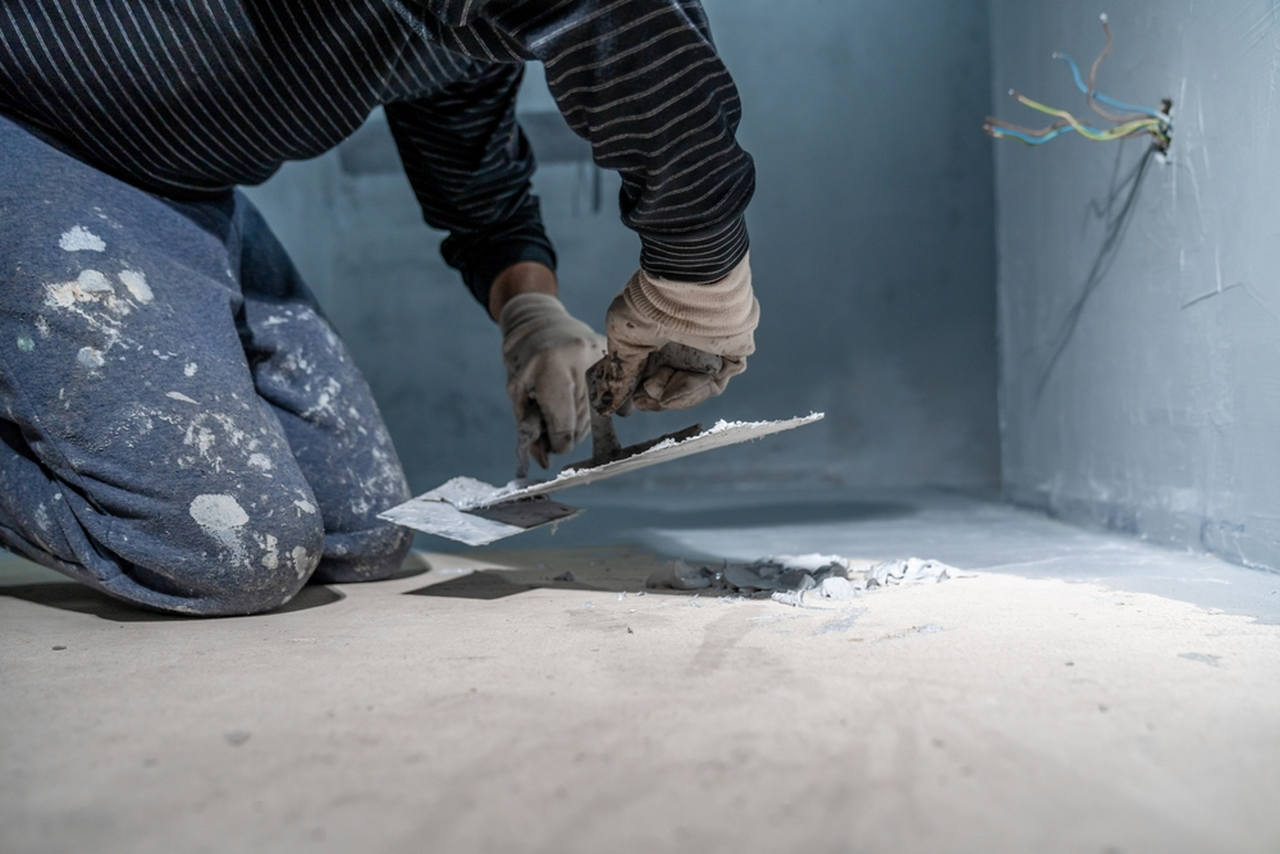Sump pump installation & replacement Omaha: The Beginner’s Guide
Wiki Article
Exactly How Waterproofing Works: A Detailed Consider Methods and Technologies
Waterproofing is vital for safeguarding frameworks from moisture-related damages. It involves numerous methods and technologies that create obstacles against water intrusion. Typical techniques, such as compressed clay, exist together with modern innovations like liquid-applied membrane layers. Understanding the subtleties of these methods is vital for efficient application. However, the performance of any type of waterproofing solution pivots not only on the methods used however also on continuous maintenance and examination. What are the crucial elements that affect long-term efficiency?Understanding the Fundamentals of Waterproofing
Waterproofing is a vital procedure that safeguards frameworks from water invasion, which can bring about considerable damages over time. This technique involves the application of different products and techniques created to create a barrier against dampness. The primary objective is to stop water from passing through surfaces, which can trigger deterioration, mold growth, and structural instability.Various aspects affect the selection of waterproofing method, including the sort of framework, its area, and ecological problems. Understanding the physics of water movement and the properties of different materials is vital in picking a reliable waterproofing solution.Effective waterproofing not just safeguards buildings but also enhances their longevity and stability. Normally, it is incorporated right into the layout stage of building and construction to assure comprehensive protection. As awareness of water-related problems grows, the significance of comprehending waterproofing basics becomes increasingly clear to architects, contractors, and homeowner alike.Typical Waterproofing Approaches
Typical waterproofing approaches have actually been used for centuries, counting on tried and true techniques and materials to guard frameworks from water damages. One of the oldest approaches includes using clay, which, when compacted, produces a natural obstacle versus moisture. In addition, asphalt, a sticky, black material derived from oil, has been employed for its waterproof buildings, usually related to roofings and foundations.Another method involves the application of lime-based plasters, which provide a breathable layer that enables wetness to leave while preventing water access. Thatch roof covering, a standard method still seen in some societies, uses exceptional waterproofing due to its snugly loaded straw layers.Moreover, making use of stone and brick has actually been famous, as these materials are inherently immune to water when appropriately mounted. Generally, traditional waterproofing techniques emphasize the value of selecting proper products and building techniques to enhance durability versus water intrusion.Modern Waterproofing Technologies
Improvements in modern waterproofing innovations have actually revolutionized the method frameworks are protected from water damage. Cutting-edge approaches such as liquid-applied membranes and innovative sealants have improved the performance and versatility of waterproofing services. These innovations permit for seamless application, reducing the danger of leakages and making certain thorough coverage over complicated surfaces.Moreover, the combination of clever modern technologies, such as moisture sensors and automated tracking systems, allows real-time analysis of waterproofing efficiency. This aggressive strategy facilitates timely maintenance and reduces long-term repair work costs.Additionally, improvements in spray-applied finishes supply fast application and superb attachment, adjusting to numerous substratums while supplying durable defense. Techniques like polymer-modified systems even more improve versatility and toughness, making them ideal for varied atmospheres. Generally, modern-day waterproofing modern technologies not only minimize water breach but likewise add to the long life and sustainability of frameworks, noting a significant shift in the industry.Materials Used in Waterproofing
The performance of waterproofing remedies heavily counts on the products made use of in their application. Numerous products are employed to develop obstacles against water access, each with special residential or commercial properties matched for various environments. Commonly made use of materials consist of membranes, coatings, and sealants.Liquid-applied membrane layers, typically made from polyurethane or acrylic, form a smooth barrier that adjusts to complex surface areas. Sheet membranes, commonly built from rubber or thermoplastic, offer resilience and are suitable for larger locations. index Additionally, cementitious waterproofing products, made up of cementitious compounds, give exceptional adhesion and flexibility.Sealants made from silicone or polyurethane are vital for joints and joints, making sure comprehensive defense. Innovative materials, such as geo-composite membrane layers, incorporate multiple functions, boosting efficiency. In general, the option of waterproofing materials is crucial in attaining long-lasting and efficient water resistance, customized to specific project demands and ecological problems.
Common Applications of Waterproofing
Waterproofing plays a crucial role in various industries, making certain the longevity and stability of frameworks. Usual applications consist of residential services that secure homes, business framework that safeguards businesses, and industrial settings that need durable defense versus moisture. Understanding these applications highlights the significance of waterproofing in preserving both security and capability throughout various settings.Residential Waterproofing Solutions
Several home owners encounter challenges with moisture breach, making effective property waterproofing solutions vital. Numerous methods exist to resolve this issue, consisting of inside and exterior waterproofing systems. Interior services typically involve the application of sealants and coatings to basement walls, which aid prevent water seepage. Exterior techniques typically include the setup of drainage systems and waterproof membranes that draw away water far from the foundation.Additionally, homeowners thermoflex waterproofing may consider sump pumps to get rid of water build-up and dehumidifiers to manage moisture levels. Appropriate grading and making use of gutters likewise play a vital duty in taking care of water circulation around the home. By applying these methods, house owners can considerably decrease the risk of water damage and mold growth, guaranteeing a completely dry and risk-free living environment.
Commercial Framework Defense
Reliable waterproofing services play a vital role in the security of business framework. Yard drainage Omaha. These strategies are vital for guarding structures, vehicle parking frameworks, and bridges from water damage, which can jeopardize structural stability and result in expensive repair services. Typical applications include the installation of membrane layers, layers, and sealants that create barriers against moisture seepage. Locations such as basements, roof coverings, and outside wall surfaces are often focused on to ensure durability and resilience. Furthermore, waterproofing systems can improve power efficiency by stopping water-related concerns that might bring about mold development and deterioration. By executing robust waterproofing actions, residential or commercial property proprietors can safeguard their investments and maintain functional effectiveness, inevitably adding to the overall sustainability of commercial centersIndustrial Applications Overview
While different fields face distinct obstacles, the need for trusted waterproofing solutions remains a continuous in industrial applications. Industries such as production, building and construction, and power often experience atmospheres where moisture exposure can threaten structural integrity and operational efficiency. In producing facilities, waterproofing is important for shielding machinery and products from water damages. In construction, it safeguards foundations and basements versus groundwater seepage. The energy market counts on waterproofing for the protection of equipment in hydroelectric plants and overseas frameworks. In addition, food handling markets use waterproofing to assure health and compliance with security requirements. Generally, reliable waterproofing remedies are essential for enhancing toughness, safety, and performance across various commercial settings.
Maintenance and Longevity of Waterproofing Solutions
Waterproofing options are made to use long-lasting protection versus wetness intrusion, normal upkeep is necessary to ensure their effectiveness and long life. Regular assessments play a significant function in identifying potential issues such as fractures, peeling off, or indications of water damage. Resolving these issues without delay can avoid more wear and tear and pricey repairs.Additionally, cleaning the surface area of waterproof areas assists get rid of dirt and debris that can compromise the stability of the waterproofing obstacle. It's also a good idea to reapply safety finishings or sealers as recommended by makers to maintain read optimal efficiency. Ecological elements, such as UV exposure and extreme weather, can influence the lifespan of waterproofing materials, making regular evaluation crucialRegularly Asked Inquiries
Can Waterproofing Be Applied in Cold Weather?
The question of applying waterproofing in chilly weather condition elevates problems about adhesion and curing. Numerous products may not carry out at their finest in reduced temperature levels, demanding mindful option and factor to consider of specific guidelines for effective application.The Length Of Time Does Waterproofing Usually Last?
The duration of waterproofing efficiency varies based on materials and environmental factors. Generally, it can last from five to 10 years, but regular maintenance and assessments are important to assure peak performance and long life.Is DIY Waterproofing Effective and Safe?
The effectiveness and safety of do it yourself waterproofing depend on different elements, consisting of worldly top quality and application technique. While some individuals achieve satisfactory outcomes, others might experience problems that jeopardize long-lasting security and architectural stability.What Are the Indications of Failing Waterproofing?
Signs of failing waterproofing consist of visible water stains, peeling paint, mold and mildew growth, moldy smells, and wetness in walls or ceilings - Water Solutions. These indications recommend compromised obstacles, requiring prompt examination and prospective removal to stop additional damageExactly how Do I Choose the Right Waterproofing Service Provider?

Report this wiki page